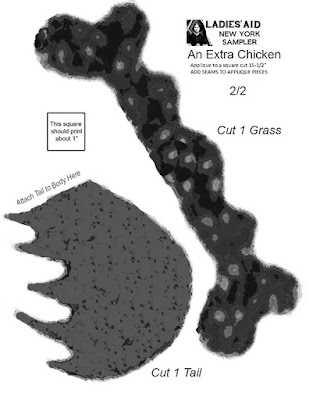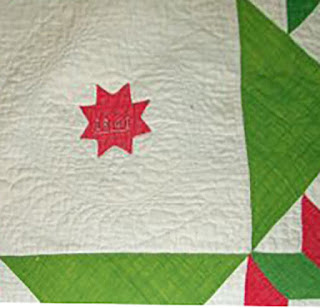Attributed to Laura Adye Whicher (1801-1875), Indiana
Collection of the D.A.R. Museum
Laura was born in Vermont, spent many years in New York
and went west to Indiana where this quilt was probably made.
There's been some discussion of a chicken block in our Ladies Album group doing the Block of the Month program at LadiesAidAlbum Facebook page
mainly because Robyn Revelle Gregg added a chicken block to her sampler.


Chickens (roosters) are seen on New York sampler
albums (the source of the 2021 patterns) but the pictures I have are so bad I
didn't include one in the official blocks. However, I showed this fowl
recorded by the New York project, inspiring Robyn.
I did a little Photoshopping on him and made a pattern
(of sorts.) See Below.
From the New York Project and the Quilt Index,
Mid-19th-century from Greenport, Suffolk County, New York.
1880s, New York
Stella Rubin's inventory
When one comes across a vintage example...
Attributed to Rachel Glotfelty, Pennsylvania
Indiana State Museum
...one is always amused.
Bird of Paradise Sampler from Poughkeepsie.
American Folk Art Museum Collection
Detail from another sampler top from Stella Rubin's inventory.
Attributed to Connecticut---in that New York/New Jersey/Connecticut
sampler style.
1868 Hannah J. Swin
Bill Volckening's Collection
Miami Valley Ohio album from the Arnett Family
Collection of the International Quilt Museum, early 20th century
Another on the cover of Sue Cummings's book on
the style.
Postcard from Julie Silber's Mary Strickler quilt collection.
American Folk Art Museum
Political Crazy quilt with a rooster panel advocating the
election of Grover Cleveland in 1884.
We've almost forgotten that the rooster was a symbol of the Democrats, which may have something to do with some of these later quilts.
Button from the 1950s
See a 1930s pieced rooster that the Metropolitan Museum believes to symbolize the Democrats here:
Print these sheets out 8-1/2" x 11" for a rooster pattern.
































































